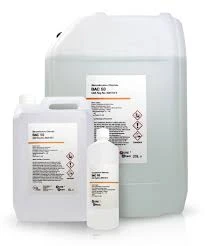Understanding Different Types of Flocculants and Their Applications in Water Treatment
Types of Flocculants An Overview
Flocculants are essential agents in various industrial processes, primarily used to promote the aggregation of fine particulates into a floc or flocs, making them easier to separate from liquid. This process, known as flocculation, plays a significant role in water treatment, mining, paper production, and other sectors. The effectiveness of flocculants can vary based on their chemical composition, and understanding the different types available can help industries select the most suitable flocculant for their specific needs.
1. Anionic Flocculants
Anionic flocculants carry a negative charge and are primarily derived from synthetic polymers. They are particularly effective in treating waste streams that contain positively charged particles such as metals, clays, or other inorganic materials. The negative charge of anionic flocculants facilitates the neutralization of these positive charges, leading to the formation of larger flocs. These flocculants are commonly used in the mining industry for the clarification of mineral slurries and in municipal wastewater treatment plants where they help in the removal of suspended solids.
One of the most prevalent types of anionic flocculants is polyacrylate, which is known for its high molecular weight and adhesive properties. Its application can lead to efficient sedimentation and improved water clarity, making it an attractive option for various industrial processes.
2. Cationic Flocculants
Cationic flocculants carry a positive charge, making them effective in treating negatively charged particles. Similar to anionic flocculants, they are often used to improve sedimentation rates and enhance the clarity of water. Cationic flocculants are widely utilized in the paper and pulp industry, where they help in retaining fiber and fillers during the manufacturing process.
These flocculants are essential in applications where organic matter is predominant, such as sewage treatment and food processing. Common examples include polyamine and polyDADMAC (PolyDiallyldimethylammonium Chloride), which can improve the performance of filtration systems and ensure stronger floc formation.
flocculant types

Non-ionic flocculants do not carry any charge and are primarily used when the characteristics of the particulates are neutral. These flocculants are effective in specific situations where ionic strength can vary, and they can be used in a wide range of applications. Their versatility makes them suitable for applications in various fields, including textile, mineral processing, and even oil recovery.
Polyethylene oxide (PEO) is a common non-ionic flocculant known for its ability to improve the viscosity of liquid slurries and facilitate the agglomeration of fine particles without altering their charge.
4. Natural Flocculants
Natural flocculants derive from organic sources such as plants and microorganisms. Some well-known examples include starch, alginate, and chitosan. These biodegradable agents are often favored due to their environmentally friendly properties, making them suitable for applications where sustainability is a concern.
Alginates, extracted from brown seaweeds, are often employed in the food and pharmaceutical industries due to their gelling and thickening properties alongside flocculation. Similarly, chitosan, derived from chitin found in crustacean shells, has shown promise in various water treatment processes due to its ability to bind heavy metals and organic contaminants.
5. Combination Flocculants
The combination of different types of flocculants can also enhance performance. For example, mixtures of cationic and anionic flocculants can optimize charge neutralization, improving floc formation and settling rates in complex wastewater treatment scenarios. Additionally, these combinations can help achieve tailored solutions, addressing specific challenges in diverse industries.
Conclusion
The choice of a flocculant depends on various factors, including the nature of the material to be treated, the desired outcome, and environmental considerations. Different types of flocculants—whether anionic, cationic, non-ionic, natural, or combinations thereof—offer unique benefits that can greatly enhance industrial processes. As industries continue to evolve and seek more efficient, sustainable solutions, the development and application of innovative flocculants will play a key role in achieving these objectives. Understanding the characteristics and applications of different flocculant types empowers industries to make informed choices, ultimately leading to improved performance and environmental stewardship.
-
lk-319-special-scale-and-corrosion-inhibitor-for-steel-plants-advanced-solutions-for-industrial-water-systemsNewsAug.22,2025
-
flocculant-water-treatment-essential-chemical-solutions-for-purification-processesNewsAug.22,2025
-
isothiazolinones-versatile-microbial-control-agents-for-industrial-and-consumer-applicationsNewsAug.22,2025
-
scale-inhibitor-key-solutions-for-water-system-scale-preventionNewsAug.22,2025
-
organophosphonates-versatile-scale-inhibitors-for-industrial-water-systemsNewsAug.22,2025
-
scale-and-corrosion-inhibitor-essential-chemical-solutions-for-water-system-maintenanceNewsAug.22,2025





